Research Article 
 Creative Commons, CC-BY
Creative Commons, CC-BY
The Influence of the Weight of the School Backpack Carried on the Chest on the Body Posture Features in the Sagittal and Transversal Plane and its Relationships with Physical Fitness in 7-Year-Old Children of Both Sexes
*Corresponding author: Mirosław Mrozkowiak, Physiotherapy Practice AKTON, Poznań, Poland.
Received: August 31, 2023; Published: October 12, 2023
DOI: 10.34297/AJBSR.2023.20.002699
Summary
Introduction: The way the weight of school supplies is carried may influence the persistent percentage of postural static disorders.
Material and Method: The body posture tests were carried out in a group of 65 students aged 7 years, using the moiré projection method in 4 positions: 1st - habitual posture, 2nd - posture after a-10-minute of axial symmetrical loading, 3rd - one minute after the load removal, 4th - two minutes after the load removal. Physical fitness was measured with the Sekita test, completed by an endurance test.
Results: The values of habitual posture features were analysed and after a 10-minute loading with a 4 - kg backpack to determine the significance of the differences of the values and their correlation with physical fitness features.
Conclusions: (1) Carrying the school supplies on the chest may result in significant adaptive changes in the skeletal and muscular system. It must be assumed that the longer the carrying time, the greater weight of the schoolbag and the intensity of effort, the bigger the changes. Changes are sex dependent. (2) Physical fitness features show gender-dependent relationships with differences in the values of body posture features under the influence of the assumed load. The relationships are more common among boys. (3) It is not recommended to carry a 4-kg schoolbag for 7-year-old children of both sexes on the chest because of the significant disorders in the body posture. There might be also disturbance in the motion range and breath rhythm of the chest.
Keywords: Children’s health, Moiré topography, Physical fitness, Postural asymmetry factor
Introduction
The moment of becoming 6-7 is a sudden change in a child’s lifestyle. The essence of this change is the beginning of schooling and hence the sedentary posture for several hours, limitation of physical activity, increased concentration, and compliance with the new day schedule. An additional element of school education is the problem of carrying school supplies. According to WHO standards, the weight of the school backpack should not exceed 10% of the weight of the child. The research of the State Sanitary Inspectorate showed that the weight of a schoolbag significantly exceeded the recommended 10% in 44% of students from the urban environment and 38% from the rural environment [1]. If children have school lockers, they should leave unnecessary textbooks there. The role of the parent and teacher is invaluable in this case, as they should teach the child to select school supplies. Mikołajczyk’s research in a group of 224 parents of 7-year-old children showed that leaving some of the accessories in the school locker allows to reduce the weight of the schoolbag by 21%, as 9% of children put some accessories to the school locker, 55% of children do not have their own locker, and 3 % of children do not use it because they forget to take home what is necessary [2]. Studies by Maciałczyk-Paprocka [3] and Permody [4] have shown that the frequency of postural defects in the diagnosed population ranges from 30% to 60%. The research of the Healthcare Information Systems Center shows that spine deformities were diagnosed in 17.14% of children and adolescents aged 0–18 years and in 9.7% aged 2–9 years [5]. Research by Górecki et al. shows that changes in the skeletal system of the spine, chest, pelvis, and upper and lower limbs make 45–55% of all posture defects [6]. Wawrzyniak et al. believe that posture defects are a significant health problem in the child population. Due to the observed tendency to limited physical activity in favor of sedentary activity, the problem will increase significantly. It is necessary to implement primary and secondary prophylaxis in order to reduce possible adverse health effects.
The influence of the students’ environment on their posture was investigated by Wandycz, et al. [7-13], Romanowska [14], Annetts, et al. [15], Mrozkowiak [16,17], Mrozkowiak, Żukowska [18], among others. Researchers usually focused on the role of the school chair and the table in student posturogenesis, ignoring the impact of carried school supplies. Early research by Mrozkowiak outlined the problem by exploring the impact of the load imitating a schoolbag on changes in selected spatial posture features and the subsequent restitution of the sagittal and frontal parameters of the spine and pelvis after the load removal [16].
The author’s interest in the issues stems from the persistently high percentage of disorders of the body posture of students from the oldest preschool group and 1st-3rd grades of primary school, the constantly proclaimed opinion about the negative impact of the way of carrying school supplies on body postures, and the lack of clear recommendations about the optimal weight and contraindications against the negative way of carrying these utensils. The general objective of the implemented research programme is an attempt to determine the impact of weight of carried school supplies in the following way: obliquely on the right shoulder or left shoulder and at the heteronymous hip, on the left or right shoulder, on the back, on the chest, on the back and chest, dragged with the left or right hand.
The aim of the research programme was to present changes in the values of selected posture features of the sagittal and transversal plane under the influence of the weight of the schoolbag carried on the chest and their relationship with the features of physical fitness.
Research Material
The study involved children from randomly selected kindergartens in the West Pomeranian and Greater Poland voivodeships. Body posture defects and disturbances were not a criterion that excluded participation in the research programme. The division of the respondents into those from rural and urban environments was abandoned since this feature would never determine the homogeneity of the group and the cultural and economic blurring boundary of both environments. The respondent was qualified to the programme according to the following scheme: if the respondent was 6years, 6months and 1day old and under 7years, he was included in the 7-year-old age group. This allowed to use the previously developed normative ranges appropriate for this age and sex category, diagnosing the quality of the body posture from the test day [19]. In total, 65 students participated in the programme, of which 53.84% (35 people) there were girls and 46.15% boys (30 people).
Overall Physical Fitness
The Wroclaw Physical Fitness Test for 3-7-year-old children was used to diagnose physical fitness [20]. According to the author, the test is of a high degree of reliability and is adequate in terms of discriminatory ability and degree of difficulty [21]. The proposed test, which significantly increased the motivation to exercise in the presence of parents, consists of four tests implemented as a part of the Sports Day: agility (pendulous run over 4x5m with carrying blocks), power (standing long jump), speed (running at 25m), and force (a 1kg ball both-hands-throw from the head). The author modified the test by a fifth attempt - endurance. Starting position - high starting stance. Movement - run over 300m. The running time from the start to finish was assessed and converted into points depending on the result and gender. If the child did not finish the race, they got score “0”. The run took place on a recreational path with a hardened surface, remaining all safety rules [22]. Visualization [23].
Body Posture
The applied method using the projection moiré phenomenon determines the value of several dozen features describing the body posture. It makes it possible to determine the influence of various methods of carrying a bag with school supplies on body posture, restitution of the value of features after removing the load, and the importance of physical fitness in disorders and restitution of the value of the diagnosed features [24,25].
A custom-designed diagnostic frame was provided to ballast the body posture (utility model no. W.125734) (Picture 1). The presence of an assistant during the examination was dictated by the need of minimizing the time from the load removal to the second registration of the value of the posture features. Every effort has been made to ensure that the custom-designed loaded frame was individually adapted to the type of child’s body structure. The adopted 10-minute load time was the average time to walk from the place of residence given in the questionnaire completed by the parents [26]. However, the load was determined by averaging the weight of school supplies to 4kg carried by first-class children from a randomly selected primary school. Selected features of body posture were measured in 4 positions, 4 for each way of carrying. The first position - habitual position, (Picture 2). Second position - posture after 10 minutes of symmetric loading on the back (in the last 5 seconds), (Picture 1). Third position - posture one minute after the load removal (Picture 2). Fourth position - posture two minutes after the load removal (Picture 2). The load was supposed to imitate the way of carrying school supplies. The subject could move freely. This was in line with the previous results of Mrozkowiak’s research, which showed that after this time, the values of posture features could be at the starting point [16]. It could be assumed that it was an appropriate and relatively constant for each student when diagnosing the habitual posture on the first day of the research programme. However, in order to maintain the reliability of the research, it was assumed that any inconsistency with the value of the features from the first stage of the measurements may affect the final test result. Therefore, before pulling the load up destined by the procedure, the features of the habitual posture were always determined as a reference for the subsequent dynamic changes of the diagnosed features. The height and weight of the children as well as the weight of the carried school supplies were measured with a medical balance before the first day of the tests.
The measurement site for the value of selected features of the body posture consists of a computer and a card, a programme, a monitor and a printer, a projection-receiving device with a camera for measuring selected parameters of the pelvis-spine syndrome. The place of the subject and the camera were oriented spatially in accordance with the levels on the camera and in relation to the line of the child’s toes. It is possible to obtain a spatial image thanks to the projection of lines on the child’s back with strictly defined parameters, which falling on the body are distorted depending on the configuration of its surface. Thanks to the use of the lens, the image of the examined person is taken by a special optical system with a camera, and then transferred to the computer monitor. Line image distortions recorded in the computer memory are processed by a numerical algorithm into a contour map of the tested surface. The obtained image of the back surface enables a multi-layered interpretation of the body posture. Apart from the assessment of the torso asymmetry in the frontal plane, it is possible to determine the size of the angular and linear features describing the pelvis and physiological curvatures in the sagittal and transversal plane [19]. The following test procedure was developed in order to minimize the risk of making mistakes in the measurements of selected posture features [19]:
a) Habitual posture of the subject against the background of a white, lightly illuminated sheet: free, unforced posture, with feet slightly apart, knee and hip joints in extension, arms hanging along the body and eyes looking straight ahead, with the back to the camera at 2.5 meters, toes at a perpendicular line to the camera axis.
b) Marking points on the back skin of the examined: the top of the spinous process of the last cervical vertebra (C7), the spinous process being the top of the thoracic kyphosis (KP), the spinous process being the top of the lumbar lordosis (LL), the transition place from thoracic kyphosis to lumbar lordosis (PL), the lower angles of the scapulae (Łl and Łp), the posterior upper iliac spines (Ml and Mp), and the S1 vertebra. A white necklace was put on the subject’s neck to clearly mark the B1 and B3 points, Long hair up to reveal C7 point.
c) The digital image of the back was recorded in the computer memory in each of the tested positions from the middle phase of free exhalation after entering the necessary data about the examined person (name and surname, year of birth, weight and body height, comments about the condition of the knees and heels, chest, past injuries, surgical procedures, diseases of the musculoskeletal system, gait, etc.).
d) Processing of the recorded images takes place without the participation of the subject.
e) The value of the features describing the body posture spatially are printed after saving the mathematical characteristics of the photos in the computer memory (Figure 1).
Subject of Research
The Wrocław fitness test allowed to measure the strength, power, speed and agility of preschool children. The author modified Sekita’s test for a test of endurance. Definitions of the tested physical and complex motor skills are generally available in the literature.
The applied method, which uses the phenomenon of the projection moiré, defines several dozen features describing the body posture. For statistical analysis, 19 angular and linear features of the spine, pelvis, and torso in the transversal and sagittal plane as well as body weight and height were selected. It was guided by the need of the most reliable and spatially complete look at the child’s body posture, which allowed to fully identify the measured discriminants (Table 1) (Figure 2-4).
Research Questions and Hypotheses
The following research questions arise from the aim of the research
1) Will the load of an adopted way of carrying school supplies influence significantly and sex-dependently on the value of the body posture features?
2) Will physical fitness show significant and gender-specific relationships with the change in the values of the body posture features?
3) Can the way of carrying the school container be recommended for 7-year-old students?
Our own research results and the analysis of the available literature suggest that:
1) The adopted way of carrying the weight of school supplies will have a significant impact, irrespective of gender, on the value of the analyzed posture features.
2) The physical fitness features will show significant and gender- dependent relationships with the change in the value of the posture features.
3) The way of carrying a 4-kg weight of school supplies will not be recommended for 7-year-old students of both sexes due to significant changes in the value of body posture features.
Statistical Methods
It was assumed that the standard deviation is a measure of differentiation. The higher it is in relation to the mean, the greater the variation of results is in each group. There was no reference to it in the description of the results, but in analytical practice its application was treated as a concomitant measure of the arithmetic mean. In the used analysis, the reference to SD was abandoned. These were only given in the introductory tables (where M was also given) as a formality. SD was a concomitant measure of M. It was also assumed that the value of SD in the performed studies was not interpreted in any way, especially if the analysis was based on non-parametric tests and median (Me), but not the mean (M). Therefore, SD and M were finally removed in the initial analyzes to concentrate the tables and leave there only necessary issues for the research. Standard deviation is a concomitant measure of the arithmetic mean and therefore it is not valid to put it next to the median.
The analysis of the study results was performed using the IBM SPSS Statistics 26 programme. At the initial stage, the Shapiro-Wilk and Kołmogorow-Smirnow tests were used to ensure if the distributions of the analyzed variables were consistent with the normal distribution. For most of the variables, there were statistically significant deviations from the normal distribution at the level of p <0.05. Therefore, it was decided to use tests and non-parametric coefficients in the statistical analysis. The Wilcoxon rank test was used to determine whether there was a statistically significant difference (change) between two measurements (in the same group) of the quotient variable whose distribution was significantly different from the normal one. The following symbols were used in the tables: M - arithmetic mean, Me - median, SD - standard deviation, Z - Wilcoxon test statistic, “p” - significance of the Wilcoxon test. The level of significance was set at p <0.05, marked as *, and additionally, the significance level p <0.01, marked as **. Thus, if p <0.05 or p <0.01, then the difference between the measurements was statistically significant. The Spearman’s rho correlation coefficient was used to determine whether there were statistically significant correlations between the variables measured at the quotient level, which distribution significantly differed from the normal one. The level of statistical significance was set at p <0.05, marked as *, and additionally, the level of significance p <0.01, marked as **. Thus, if p <0.05 or p <0.01, then the correlation between the variables was statistically significant. If the correlation was statistically significant at the level of p <0.05, then the correlation coefficient rho should be interpreted. It could take values from -1 to +1. The more distant it was from 0, and the closer it was to -1 or +1, so the correlation was stronger. Negative values meant that as the value of one variable increased, the value of the other variable decreased. On the other hand, positive values indicated that as the value of one variable increased, the value of the other variable increased, too. In the individual tables of correlation, only the variables were considered (in the rows), which at least one statistically significant result was recorded for.
Individual values of posture features are expressed in different sizes and ranges, so it is not possible to calculate the average difference for all these variables between the two measurements. An analysis performed in such a way would distort the results and make the variables, in which the quantities are higher of greater importance, and the variables, in which the quantities were lower of less importance. Therefore, the correlations between the averaged difference in the value of features between measurements and physical fitness were made separately for girls and boys, using absolute values, i.e., the calculations did not use exact numerical values concerning the differences, but the ratio of the difference to the initial value. This approach makes the variables not to be overrepresented or underrepresented in the average result.
Obtained Results
In total, the research carried out in a group of 65 people of both sexes allowed to register 5,395 values of features describing body posture in habitual posture and dynamic positions, body weight and height, and physical fitness.
Average body weight was as follows: among girls 24.46kg, body height - 123.87, and among boys: 24.56 kg and 123 cm, respectively. All children had a slender body type according to the Rohrer Weight and Growth Index [27].
Information was also obtained through a survey conducted among 65 parents of children reported to the research project [26]. An analysis of the differences in the values of posture features between the 1st and 2nd measurement on the chest carrying, separately for girls and boys, was carried out in order to show significant changes in the adopted method of carrying school supplies in the analyzed posture features.
The analysis of the results of the applied Wrocław fitness test and the endurance diagnostic trial showed that the tested group of children represented a sufficient level of physical fitness, assuming grading: insufficient, sufficient, good, very good. This level was significantly lower than the values obtained in the measurements of other authors from 2006, 1996, 1972 and 1967 [28-30]. The phenomenon of sexual dimorphism in the studied group of 7-year-olds of both sexes was not confirmed.
Analysing the changes in the values of the posture features in carrying the backpack on the chest considering only boys, the Wilcoxon rank test showed a statistically significant difference between the 1st and 2nd measurement for all analyzed variables (Table 2). Among girls, in carrying on the chest, the Wilcoxon rank test showed a statistically significant difference between the 1st and 2nd measurement for all analyzed variables. The exception is noticeable in the angle of inclination of the lumbosacral spine (Alpha), where the change was not significant (Table 3).
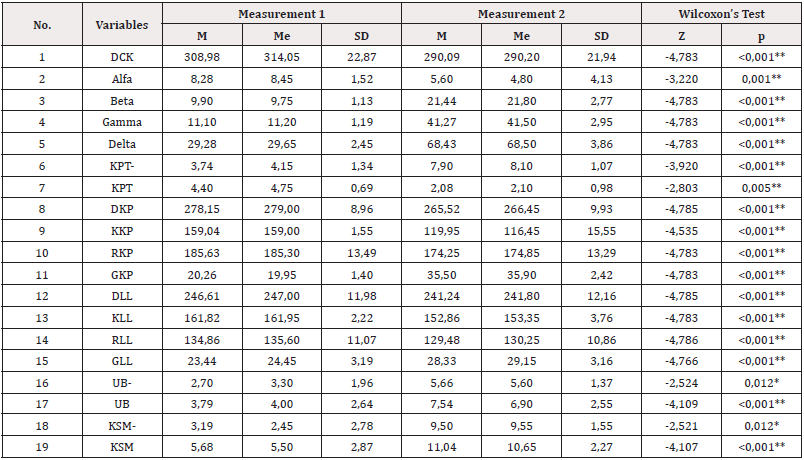
Table 2: Significance of differences in the values of posture features in the sagittal and transversal plane between the 1st and 2nd measurement with the load on the chest among boys.
Source*: Own research
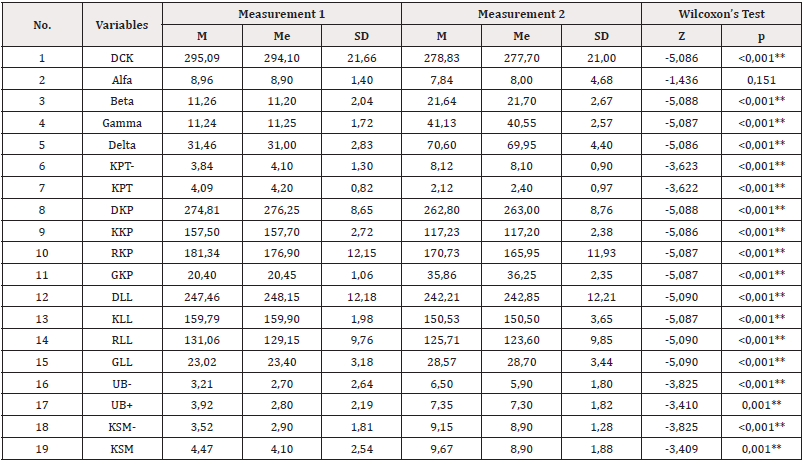
Table 3: Significance of differences in the values of posture features in the sagittal and transversal plane between the 1st and 2nd measurement with the load on the chest among girls.
Source*: Own research
Considering the boys and the significant differences between the 1st and 2nd measurement in carrying the backpack on the chest, it turned out that the greater the endurance, the smaller the differences in the inclination angle of the lumbosacral spine (Alpha), the angle of lumbar lordosis (KLL) and the smaller asymmetry of the pelvis in the transversal plane (KSM-), but the greater convexity of the angles of the lower shoulder blades (UB-). The greater the speed, the smaller the differences in the angle of lumbar lordosis (KLL) and the smaller asymmetry of the convexity of the angles of the lower shoulder blades (UB-), but the larger of the pelvis in the transversal plane (KSM-). The greater the strength, the smaller the differences in the sum of the inclination angles (Delta) of the lumbosacral (Alpha), the lower thoracic (Beta) and the upper thoracic (Gamma) angles, the angle of lumbar lordosis (KLL), and the less asymmetry of the pelvis in the transversal plane (KSM) -) but greater convexity of the angles of the lower shoulder blades (UB-). The greater the force, the smaller the asymmetry of the pelvis in the transversal plane (KSM-), but the greater the difference in the total length of the spine (DCK) and the greater the asymmetry of the convexity of the angles of the lower shoulder blades (UB-). The greater the agility, the smaller the differences in the angle of lumbar lordosis (KLL) and the smaller the asymmetry of the pelvis in the transversal plane (KSM-), but the greater the convexity of the angles of the lower shoulder blades (UB-). The greater the overall fitness, the smaller the differences in the sum of the angles of inclination (Delta), the lumbosacral (Alpha), the lower thoracic (Beta) and upper thoracic (Gamma) angles, the angle of lumbar lordosis (KLL) and the less asymmetry of the pelvis in the transversal plane (KSM) -), but greater the convexity of the angles of the lower shoulder blades (UB-) (Table 4).
When considering the presented correlations among girls, it turned out that the greater the speed, the smaller the difference in the length of lumbar lordosis (DLL), but the greater the height of thoracic kyphosis (RKP) (Table 5).
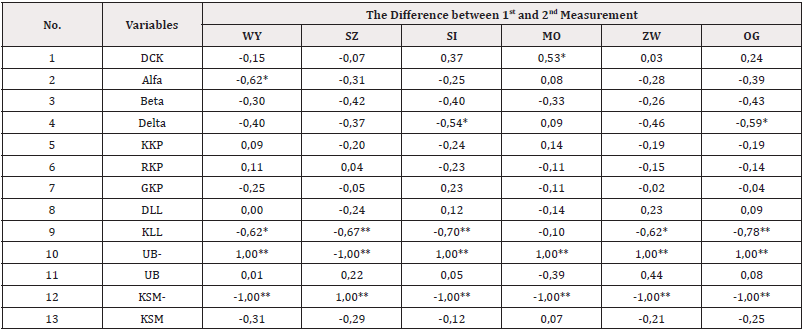
Table 4: Correlations between physical fitness and the difference in the values of posture features in the sagittal and transversal plane between 1st and 2nd measurement with the load on chest among boys.
Source*: Own research
Note*: WY - Endurance, SZ - Speed, SI - Strength, MO - Force, ZW - Agility, OG - Overall Fitness

Table 5: Correlations between physical fitness and the difference in the values of posture features in the sagittal and transversal plane between 1st and 2nd measurement with the load on chest among girls.
Source*: Own research
Note*: WY - Endurance, SZ - Speed, SI - Strength, MO - Force, ZW - Agility, OG - Overall Fitness
Discussion
Dobosz et al. conducted studies on the change of COP (center of foot pressure) under the load conditions and after removing the backpack. The no-loading test was the benchmark. When wearing a backpack in the traditional way, with a load value of 5% of body weight, the COP shifted back, which resulted in a strong compensatory reaction, leading to its displacement forward. Although it is not clear from statistical calculations, this trend occurs whenever the schoolbag is on the back at any load value, and the greater the load, the lower the compensation value On the other hand, with the backpack on the front of the body, no postural reaction was observed to the COP shifted forward in relation to its position in the no-loading test, which in this case may indicate the lack or insufficient compensation at a child. Moreover, the higher the load value, the further the COP got shifted This is only a trend that has not been confirmed statistically. It may result from the feeling of greater safety in the front bend and the awareness of the possibility of cushioning the fall with the upper limbs. The sticking values at the time of putting the backpack on in the traditional way with the load value of 10% of the body weight are statistically significantly lower than the sticking values during the tests with the same load but with the backpack on the front side of the body. Such a relationship occurs at all load values during the test with eyes open. Closing the eyes results in a significant increase in sticking for the trials with the backpack on the back with a load of 10% of the body weight and for the trials with the backpack on the front side with the load of 15% of the body weight [31]. It seems that this problem should not concern children and adolescents to minimal extent. However, statistics show that the lumbosacral, cervical and shoulder ailments more frequently affect people who have not reached the productive age yet [32,33]. School-age children most often report pain in the cervical, thoracic and shoulder sections [34,35], which suggests that the problem of musculoskeletal ailments will become more and more common in coming years [36]. According to various reports, BCS (back pain syndrome) may affect up to 50% of adolescents [37,38]. In Australia, more than 50% of adolescents aged 12-18 suffer from a backache [39]. Some reports even suggest that among 14-16-year-old children, the incidence of BCS is already at the same level as among adults [40]. The research by Walicka-Cupryś, et al. [41] shows that carrying a backpack heavier than 10% of a body weight may cause shallowing of the lumbar lordosis and a tendency to vertical positioning of the sacrum. The authors suggest monitoring the weight of school backpacks and encouraging children to leave some of their accessories at school, which will reduce the weight on the spine [41]. In the case of a growing child, long-lasting abnormal weight of the skeletal system may lead to the abnormal growth, which is based on the Delpeh-Wolff law. Fabry believes that valgus, knee and heel varus are physiological and may appear spontaneously at various age ranges, regardless of gender [42]. Hagner, et al.,[43], Penha, et al., [44], Romanowska [14] and Trzcińska, et al., [45] claim that the causes of static disorders of the lower limbs are varied and may be related to developed habits and lifestyle. The most common ones include the limitation of physical activity, sedentary lifestyle, prolonged standing position, inappropriate footwear, overweight, and excessive overload of the schoolbag. Mrozkowiak’s research on the difference in the impact of the weight of a schoolbag carried in the drag mode with the left or right hand on the body posture of a 7-year-old student showed that the carrying of a 4-kilogram weight of school supplies by both methods significantly and negatively disturbs the biomechanical statics of the body, which may cause mistakes and, consequently, defects in body posture. Therefore, this method of carrying school supplies for first-year students should not be recommended. The author also showed that overall physical fitness has a greater positive significance in disorders of biomechanical statics of body posture in boys than in girls. Among boys, the relationships of its individual features are similar in both ways of carrying, whereas among girls, greater relationships occur in the case of a right-hand drag. Moreover, the most significant motor skills among boys are endurance and strength, and among girls it is speed and force [46]. Other studies by Mrozkowiak on the influence of the weight of a school backpack carried obliquely on the right or left shoulder and at the heteronymous hip on posture features in the sagittal and transversal plane in the same group of children have shown that this way of carrying may also cause significant changes in the skeletal and muscular system. The author believes that the longer the carrying time, the greater the weight of the container and the intensity of manual effort the greater will be the changes. The changes are not gender specific. The analysed method of carrying is not recommended for 7-year-old children of both sexes. He also showed that the level of overall physical fitness has a diversified relationship with changes in the values of body posture features as a result of carrying the school supplies. The relationship is greater among boys. Among girls, the relationship is mainly between endurance and the values of the angle of inclination of the thoracolumbar spine. Among boys, all the features of fitness, most often are in relationship with asymmetry of convexity of the lower angles of the shoulder blades and the pelvis tilt in the transversal plane. The effect is gender dependent [47]. The statements quoted by Bittman and Badtke [48] and provided by Schild should be considered that the changes in the movement system of 5-7-year-old children depend primarily on the genetic determinants of the maturation of the musculo-nervous system. During this period, external factors, including physical activity, do not play a major role. It seems that the influence of external factors on the development of the locomotor system begins to increase with age and maturation of the muscular and nervous systems around the age of 7-8.
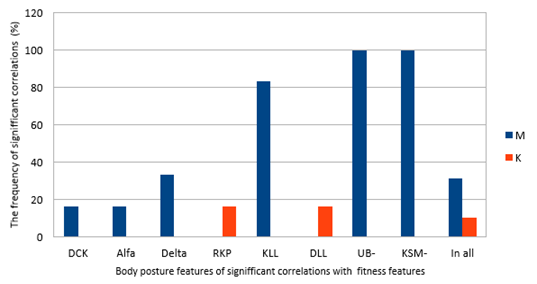
Note*: Names of body posture features - Table 1.
In all - the percentage of body posture features of significant correlations with physical fitness features
M - boys
K - girls
Figure 5: The frequency of signifficant correlations of body posture features in sagittal and transversal plane with fitness features among 7-year-old boys and girls n=65.
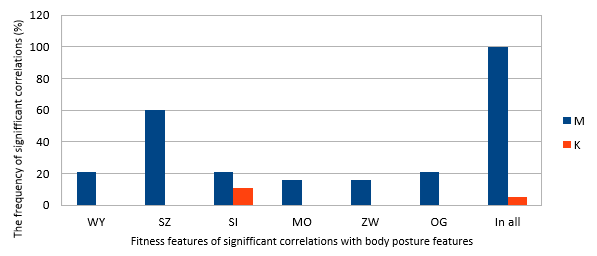
Note*: WY - Endurance, SZ - Speed, SI - Strength, MO - Force, ZW - Agility, OG - Overall Fitness
In all– percentage of physical fitness features with significant relationship with body posture features
M - boys
K - girls
Figure 4: The frequency of signifficant correlations of fitness features with body posture features in sagittal and transversal plane among 7-year-ols boys and girls n=65.
The conducted research has shown that among boys, significant relationships between postural features and physical fitness features occur most often with the asymmetry of the convexity of the lower angles of the shoulder blades, where the left angle is more convex (UB-), the asymmetry of the pelvis tilt to the left in the transversal plane (KSM-), and the values of the angle of lumbar lordosis (KLL). Among girls, the relationships are significantly smaller and occur at the height of thoracic kyphosis (RKP) and the length of lumbar lordosis (DLL) (Figure 5). Among boys, the significant relationships between the features of physical fitness and the features of body posture most often occur with speed, whereas among girls, relationships are significantly smaller and stronger (Figure 6).
Conclusions
1) Carrying school supplies on the chest may induce significant adaptive changes in the skeletal and muscular systems. It should be assumed that the longer the carrying time, the greater the weight of the schoolbag and the intensity of manual effort, the greater the changes. The changes are gender dependent.
2) The physical fitness features show sex-dependent relationships with the value of the changes in the body posture features under the influence of the assumed load. Relationships are much frequent among boys.
3) Carrying a 4kg weight of school supplies on the chest should not be practiced among 7-year-old students of both sexes. There may also be a disturbance in the range of motion and the respiratory rhythm of the chest.
Acknowledgement
None.
Conflict of Interest
None.
References
- http://www.nto.pl/wiadomosci/opolskie/art/4665270,tornistry-opolskich-uczniow-may-be-lighter, id,t.htm, 10.05.21, 4.45 p.m.
- Mikołajczyk K http://nauka.trojmiasto.pl/Tornistry-waza-za-duz0-n94880.html#tri
- Macialczyk Paprocka K, Krzyżaniak A, Kotwicki T, et al. (2012) Occurrence of errors in posture of Poznań primary school pupils. Probl Hig Epidemiol 93(3): 309-314.
- Permoda A, Permoda A, Chudak B (2010) The problem of abnormalities attitudes in children and adolescents in the area of Zielona Góra and the surrounding area. Healthy Public 120: 361-364.
- Report on activities and working in outpatient health care.
- Górecki A, Kiwerski J, Kowalski IM (2009) Prevention of postural defects in children and young people in the teaching and upbringing environment - recommendations of experts. Pol Ann Med 16: 168-177.
- Wawrzyniak A, Tomaszewski M, Mews J, Jung A, Kalicki B, et al. (2017) Postural defects in children and adolescents as one of the main problems in psychosomatic development. Pediatr Med Rodz 13 (1): 72-78.
- Wandycz A, Pietkiewicz K (2006) The height of school furniture and physical fatigue pupils of selected primary schools in the Lubuskie Province. Applications of Ergonomics 1-3: 117-125.
- Wandycz A (2007) Ailments of primary school students and the height of furniture Annales, UMC-S, Sectio D, Medicina, Lublin, Vol. LXII, Suppl. XVIII 8: 280-284.
- Wandycz A (2008) The height of school furniture and physical fatigue and ailments among junior high school students, Social and environmental health and health risks well-being, NeuroCentrum Publishing House, Lublin: 157-169.
- Wnadycz A, Jakiel R, Chabza M (2011) Work conditions and ailments related to work on the computer among primary school pupils, Corrective and Compensating Procedure in Ontogenetic Development Disorders. Zielona Góra: 143-155.
- Wandycz A (2011) Mental and physical tiredness of the secondary school pupils in Zielona Góra based on the Japanese questionnaire, Corrective and Compensating Procedure in Ontogenetic Development Disorders, Zielona Góra: 129-141
- Wandycz A (2013) Musculoskeletal disorders of people aged 7-21 years, University of Zielona Góra, Zielona Góra: 9-10.
- Romanowska A (2009) Change of child's body posture - under the influence of a school bag Physical and Health Education 5: 13-19.
- Annetts S, Coales P, Colville R, Mistry D, Moles K, et al. (2012) A pilot investigation into the effects of different office chairs on spinal angles. Eur Spine J (Suppl 2): 165-S170.
- Mrozkowiak M (2007) Biomechanical analysis of changes in selected parameters of the assembly pelvis-spine in the frontal and transverse planes during and after loading. [In:] Education in the "risk" society. Safety as a value. Vol. 2. Ed. Sciences. Matylda Gwoździcka-Piotrowska, Andrzej Zduniak. Poznań: Wydawnictwo University of Security 339-342. (Education of the 21st Century; 11).
- Mrozkowiak M (2014) An attempt to determine the importance of the GOOD CHAIR in prevention zaburzeń postawy ciała = Attempt to determine the importance of GOOD CHAIR in the prevention of body posture disorder’s. Journal of Health Sciences 4(4): 195-214.
- Mrozkowiak M, Żukowska H (2015) The Importance of the Good Chair as a School Element and home environment of the student, in the prevention of postural statics disorders = The significance of Good Chair as part of children’s school and home environment in the preventive treatment of body statistics distortions. Journal of Education, Health and Sports 5(7): 179-215.
- Mrozkowiak M (2015) Modulation, influence and relationships of selected parameters of body posture children and adolescents aged 4 to 18 years in the light of projection moiré, Publishing House Kazimierz Wielki University, Bydgoszcz: I, II.
- Sekita B (1988) Somatic development and physical fitness of children aged 3-7 years. [In] (ed.) S. Pilicz, Development of fitness and physical capacity of children and adolescents - reports from Research. Warsaw.
- Osiński W (2003) Antopomotoryka, University of Physical Education in Poznań.
- Mrozkowiak M, Kaiser A (2021) Physical Fitness in Preschool Children. Journal of Education, Health and Sport11(11): 132-142.
- https://szczecinek.com/artykul/sprawny-jak-przedszkolak/654589, 15.05.2021, 1.45 p.m.
- Mrozkowiak M (2021) Standardization of the diagnosis of body posture using photogrammetric methods MORA 4G HD, Fizjoterapia Polska 1 (21): 2-40.
- Mrozkowiak M, Strzecha M (2012) Moiré as a contemporary tool Projection moiré as a contemporary tool for body posture diagnostics Antropomotoryka. Kraków 22(60): 33-49.
- Mrozkowiak M (2020) How do parents perceive the schoolbag problem? Pedagogy and Psychology of Sport 6(4): 151-162.
- Malinowski A, Wolański N (1988) Research Methods in Human Biology, Selection Anthropological Methods. PWN Warsaw 23-26.
- Kotarska K (2010) The level of physical Þ tness in children aged 4-6 years from Szczecin examined in one decade cycle. Scientific Journals of the University of Szczecin: 631.
- Wilgocka Okoń B (1972) School maturity and children's success in learning, Upbringing in Kindergarten, No. 1. Warsaw.
- Gniewkowska H (1967) Development of motor skills of preschool children, Upbringing in Kindergarten, No. 12. Warsaw.
- Dobosz D, Sobota G (2011) Analysis of compensation patterns of vertical body posture in children after being loaded with a school backpack. Current Problems in Biomechanics 15: 19-24.
- Watson KD, Papageorgiou AC, Jones GT, Taylor S, Symmons DPM, et al. (2002) LBP in schoolchildren: occurrence and characteristics. Pain 97(1-2): 87-92.
- Jones GT, Watson KD, Silman AJ, Symmons DPM, MacFarlane GJ (2003) Predictors of low back pain in British schoolchildren: A population-based prospective cohort study. Pediatrics 111(4 Pt 1): 822-828.
- Wedderkopp MD, Leboeuf Yde DC, Anderson LB, Froberg K, Hansen H (2001) Back pain reporting pattern in a Danish population-based sample of children and adolescents. Spine 26(17): 1879-1883.
- Trevelyan FC, Legg SJ (2006) Back pain in school children-Where to from here? Appl Ergo 37(1): 45-54.
- Vikat A, Rimpelä M, Salminen JJ, Rimpelä A, Savolainen A, et al. (2000) Neck or shoulder pain and low back pain in Finnish adolescents. Scand J Public Health 28(3): 164-173.
- Salminen JJ, Erkintalo M, Laine M, Pentti J (1995) Low back pain in the young. A prospective three-year follow-up study of subjects with or without low back pain. Spine 20(19): 2101-2107.
- Burton AK, Clark RD, McClune TD, Tillotson KM (1996) The natural history of low back pain in adolescents Spine 21(20): 2323-2328.
- Grimmer K, Williams M (2000) Gender-age environmental associates of adolescent LBP, Appl Ergon 31(4): 343-360.
- Ebbehoj NE, Hansen FR, Harreby MS, Lassen CF (2002) Low back pain in children and adolescents. Prevalence, risk factors and prevention, Ugeskr Laeger 164(4): 755-758.
- Walicka Cupryś K, Skalska Izdebska R, Rachwał M, Truszczyńska A (2015) Influence of the Weight of a School Backpack on Spinal Curvature in the Sagittal Plane of Seven-Year-Old Children. Biomed Res Int 2015: 817913.
- Fabry G (2010) Clinical practice. Static, axial, and rotational deformities of the lowerextremities in children. Eur J Pediatr 169(5): 529-534.
- Hagner W Bąk D, Hagner Derengowska M (2010) Changes in body posture in children in the first three years of schooling, Forum Med. Rodzin 4(4): 287-290.
- Penha PJ, João SMA, Casarotto RA, Amino AJ, Penteadp C (2005) Posture assessment of girls between 7 and 10 years of age. Clinics 60(1): 9-16.
- Trzcińska D, Olszewska E, Tabor P (2009) Physical fitness and body posture 7-children with extreme somatic parameters; Pediatric Endocrinology, Diabetes and Metabolism 15(3): 188-195.
- Mrozkowiak M (2020) An attempt to determine the difference in the impact of loading with the mass of school supplies carried using the left- and right-hand thrust on body posture of 7-year-old pupils of both genders. Pedagogy and Psychology of Sport 6(3): 44-71.
- Mrozkowiak M (2021) The influence of backpack loads transported obliquely on the right or left shoulder and hip on postural features in the sagittal and transverse planes in 7-year-old pupils of both sexes. Nowa Pediatria 3.
- Bitman F, Badke G (1988) Postural disorders in children and adolescents. Physical Education and School Hygiene.



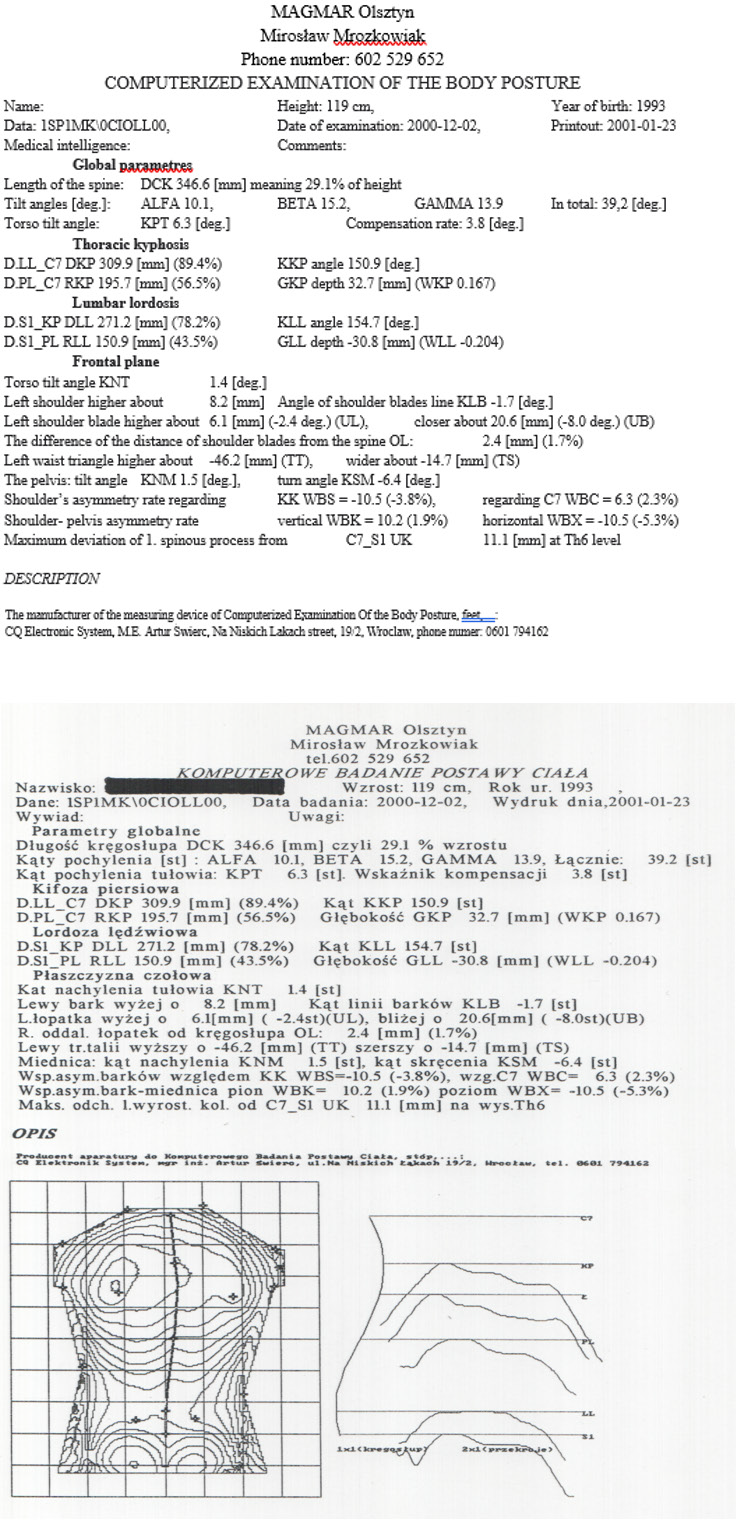
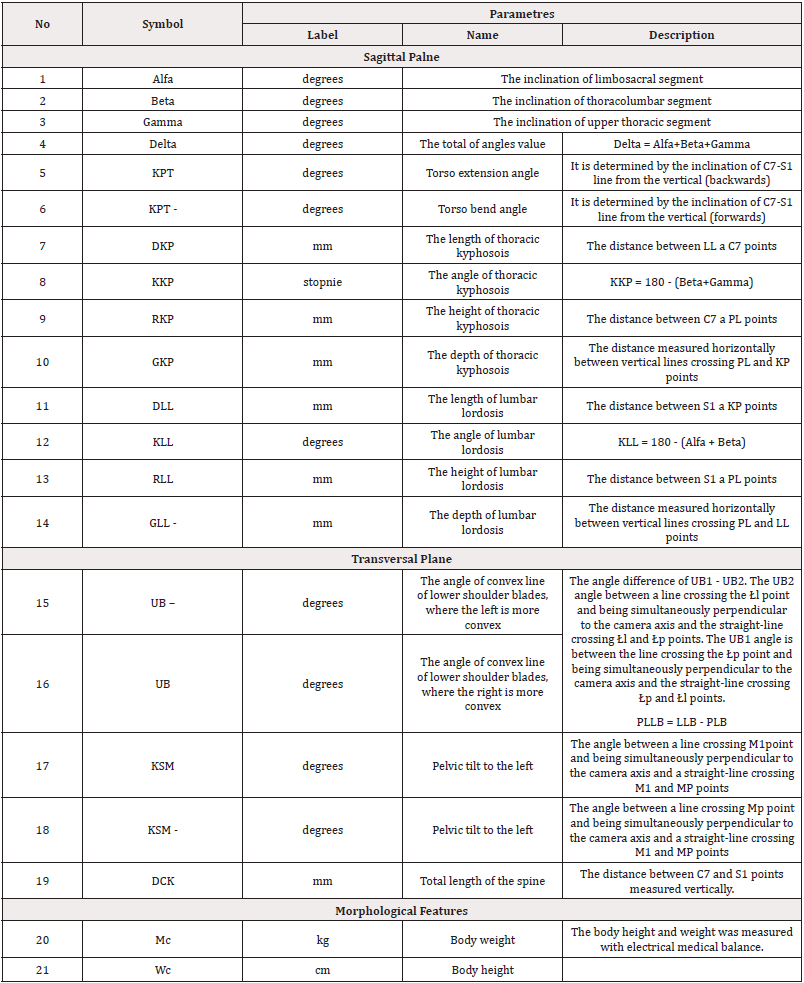
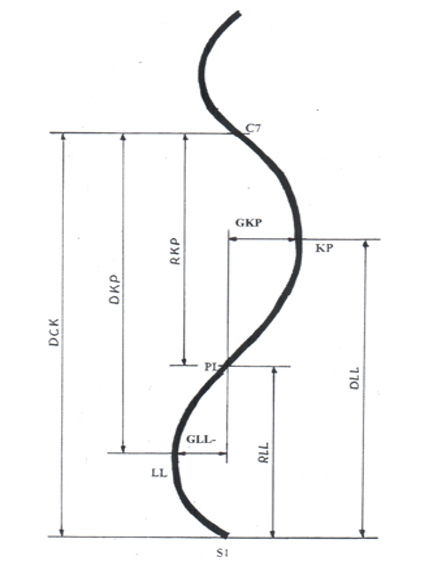
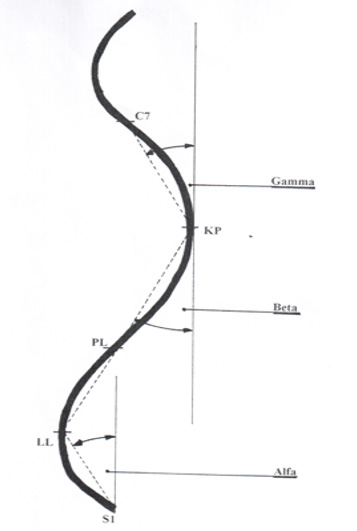
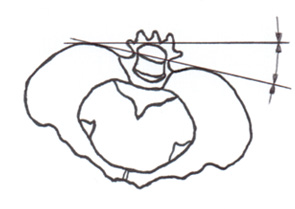


 We use cookies to ensure you get the best experience on our website.
We use cookies to ensure you get the best experience on our website.